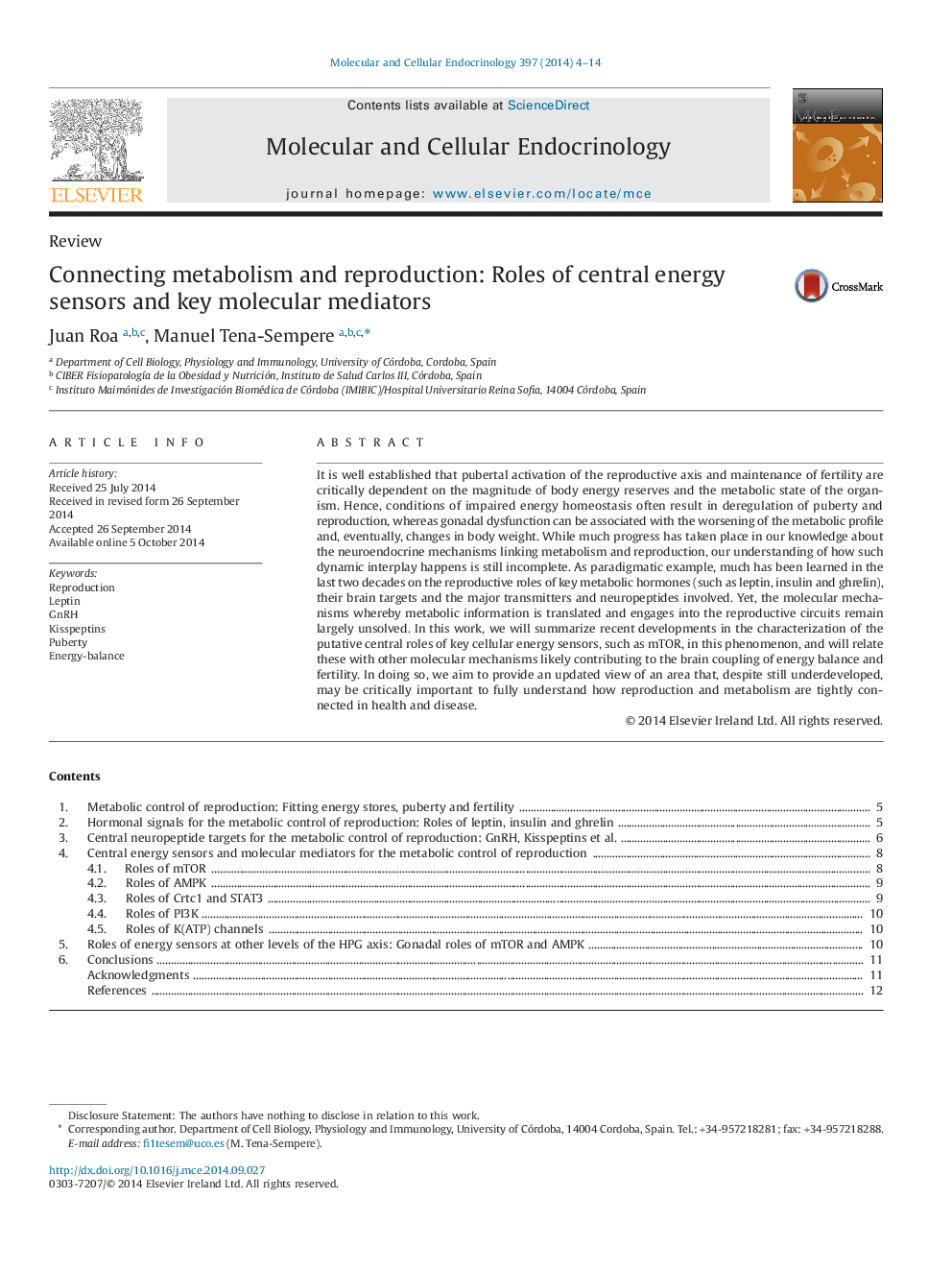| کد مقاله | کد نشریه | سال انتشار | مقاله انگلیسی | نسخه تمام متن |
|---|---|---|---|---|
| 2195987 | 1550881 | 2014 | 11 صفحه PDF | دانلود رایگان |
• Reproduction is metabolically-gated.
• Different peripheral metabolic hormones (leptin, insulin, ghrelin) control the HPG axis.
• While peripheral hormones modulate GnRH neurons, this is mostly conducted indirectly.
• Kiss1 neurons are regulated by metabolic signals, such as leptin, predominantly in an indirect manner.
• Cellular energy sensors (mTOR and AMPK) participate in the metabolic control of the HPG axis.
• This function is conducted centrally, but direct gonadal actions take place also.
It is well established that pubertal activation of the reproductive axis and maintenance of fertility are critically dependent on the magnitude of body energy reserves and the metabolic state of the organism. Hence, conditions of impaired energy homeostasis often result in deregulation of puberty and reproduction, whereas gonadal dysfunction can be associated with the worsening of the metabolic profile and, eventually, changes in body weight. While much progress has taken place in our knowledge about the neuroendocrine mechanisms linking metabolism and reproduction, our understanding of how such dynamic interplay happens is still incomplete. As paradigmatic example, much has been learned in the last two decades on the reproductive roles of key metabolic hormones (such as leptin, insulin and ghrelin), their brain targets and the major transmitters and neuropeptides involved. Yet, the molecular mechanisms whereby metabolic information is translated and engages into the reproductive circuits remain largely unsolved. In this work, we will summarize recent developments in the characterization of the putative central roles of key cellular energy sensors, such as mTOR, in this phenomenon, and will relate these with other molecular mechanisms likely contributing to the brain coupling of energy balance and fertility. In doing so, we aim to provide an updated view of an area that, despite still underdeveloped, may be critically important to fully understand how reproduction and metabolism are tightly connected in health and disease.
Journal: Molecular and Cellular Endocrinology - Volume 397, Issues 1–2, November 2014, Pages 4–14
